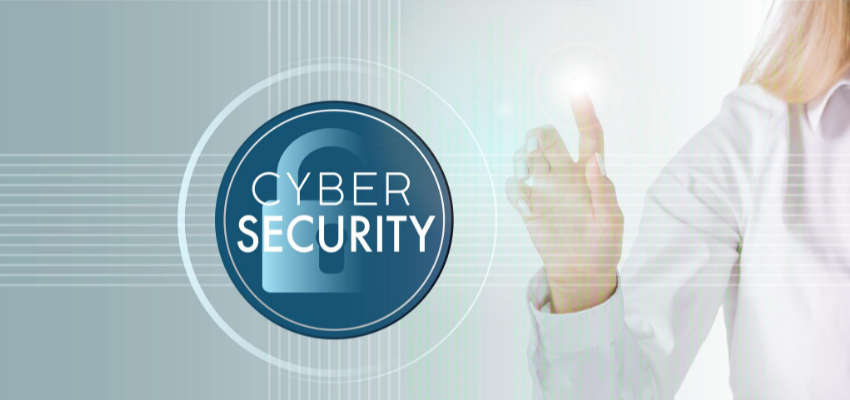Show:
8 Ways to Digitally Secure Your Business Information
No matter what business you are in, the security and safety of your business information is of paramount importance. And as cyber threats and data breaches are increasing daily, you must make your security system robust enough to prevent these attacks.

While there are countless ways to do so, only a handful of them are actually helpful in improving the digital security of your business information. In this blog, we are going to jot down some of those ways with brief detail. Keep reading to learn how to secure your business information.
1. Implement Strong Password Policies
This is the most basic thing you can start from. The security of your devices and files starts with setting up strong passwords that are difficult to guess. Most of the data breaches occur either because the passwords are too short or easy to guess.
As a business owner, you will have to encourage and train your employees to use complex passwords that will be hard to decrypt. This includes passwords with a combination of uppercase and lowercase letters and special symbols and characters.
Along with setting up complex and long passwords, it is also advised to keep changing these passwords and not share them with anyone else, even within your organization. This will add an extra layer of security to your information and prevent data breaches.

2. Conduct Regular Security Audits
Regular security audits are a fundamental step in ensuring the safety of your business information. These audits involve a thorough assessment of your IT infrastructure, software, and processes to identify vulnerabilities.
Remember that your security audit should include accessing the strength of firewalls and encryption protocols, reviewing user permissions, and keeping all software and systems up-to-date. These things will help you audit every security measure and see if it’s working correctly as intended.
3. Keep Software and Systems Updated
Outdated systems within your office are one of the biggest security concerns to your business. Computer systems with outdated operating systems and software programs run on outdated security measures. Due to this reason, they are more prone to security threats.
To eliminate this risk, you will have to ensure that all the systems and software applications in your company are up-to-date and running on the latest security patches. To ensure this, you can set auto updates on your systems so they can be updated to the latest security patches as soon as the updates arrive.
It will save you from the hassle of manually downloading and installing updates on your systems.
4. Use a Virtual Data Room (VDR)
For those of you who don’t know, a virtual data room is considered an online repository where you can save documents and business dealings and hold secure meetings. VDRs are equipped with the latest and most robust security standards that can help you save all the information related to your business.
Using this online repository, you can review, share, and edit business documentation. There is also an option to share a specific document with only key personnel in your company. These features and functionalities make this medium the most secure one to store and share your business information.
But it’s also important to make the right choice when selecting a data room for your business. The VDR provider should be a reliable and reputed one with the most robust security measures in place. To find one such VDR provider, you can click the link here: https://www.firmex.com/virtual-data-room/.
They have the most secure and reliable data rooms to offer businesses and help them with all their confidential sharing needs.
5. Educate Your Team on Security Breaches
Your employees are often the first line of defense against cyber threats. So, make sure you educate them on security best practices to minimize human error from your side. To make them aware of all the security threats, you will have to train your employees to recognize and report suspicious emails or messages.
Also, teach them to be cautious about sharing sensitive information, both online and offline. To make the security measures stronger and more robust, you will also have to emphasize the importance of keeping workplace and personal devices locked and secured. This will be especially important when they are in public places and using public Wi-Fi.

6. Monitor and Respond to Threats in Real Time
This is the most important thing you will have to do in terms of protecting your organization’s data. To ensure this, it is advised to have a system in place to detect and respond to security threats in real-time is essential. This involves implementing the right software or hardware that monitors network or system activities for suspicious behavior.
You will also need to use tools that analyze security data from various sources to identify potential threats. If you don’t have enough time to handle it yourself, you can establish a team responsible for investigating and mitigating security incidents.
7. Encrypt Your Data
Encryption is a powerful technique that involves translating your data into code. This makes it unreadable to unauthorized users. Encryption involves advanced methods to convert your data into unreadable formats so only you can have access to it.
There are two main types of encryptions used in the industry. One is the encryption of data at rest. This involves encrypting files and databases stored on servers, laptops, or other storage devices.
The other type is data in transit. This means encrypting information that’s being transmitted over networks, such as emails or file transfers. Implementing these levels of encryption ensures that even if data is intercepted, it remains unintelligible to attackers.
8. Back-up Your Data Regularly
Regular backups are crucial in case of data loss due to cyber-attacks, hardware failures, or other unforeseen events. There are many ways you can back up your data.
This includes setting up automated processes to regularly back up critical data, storing backup in a secure offsite location, and periodically testing the restoration process to ensure that backups are viable and accessible.

 Return to Previous Page
Return to Previous Page








